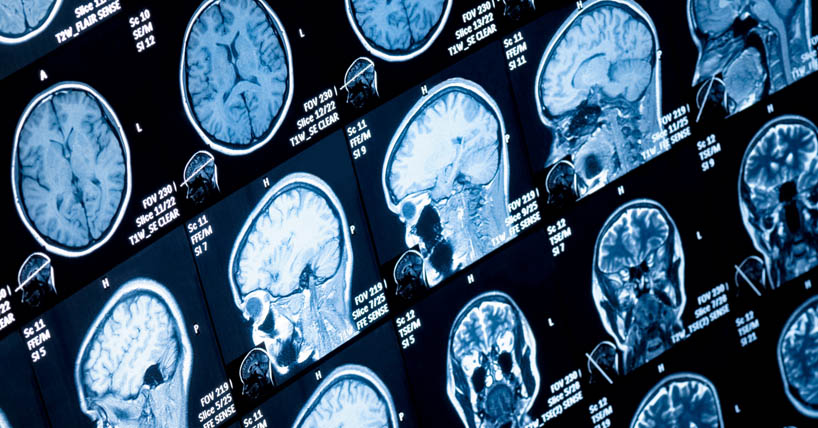Childhood brain tumour
Better understanding of aggressive brain tumour
Published on: 8 January 2019
Research led by Newcastle University has allowed scientists to gain a greater understanding into an aggressive form of childhood brain cancer.
Atypical teratoid rhabdoid tumours (ATRTs) are rare and aggressive tumours of the central nervous system, occurring mostly in the cerebellum (the part of the brain that controls movement and balance) or the brain stem (which controls basic body functions).
ATRTs are mainly seen in children aged three years or younger, and are the most frequent high-grade brain tumours seen in babies less than six months old.
Previous research has shown that in about 95% of rhabdoid tumours, like ATRTs, there is a decrease in a tumour suppressor gene called SMARCB1.
But now new research, published in the academic journal Cancer Cell, has shed light on the manner in which changes to SMARCB1 result in the development of ATRTs.

Tumour development
Tumour suppressor genes decrease cell division, slow down DNA repair, and tell cells when to die. When a tumour suppressor gene doesn't work properly, cells can grow and divide out of control, which can lead to cancer.
The SMARCB1 gene provides the instructions to make part of the machinery that controls how cells 'read' genes.
Genes are tightly wrapped around proteins called histones. Changes to these histones can either switch genes on or off by making them easier or harder to read by the cell.
In general, a histone change known as H3K27 acetylation (H3K27ac) makes genes easier to read and so switches them on, whereas a change known as H3K27 tri-menthylation (H3K27me3) makes genes harder to read and so switches them off.
The switching on and off of genes in this way is essential for normal cell function, and is tightly regulated.
Researchers found that when SMARCB1 is not present in the cell, these changes to histones do not occur as they should, causing several genes to be switched off when they should be switched on and vice versa.
New treatment strategies
In essence, this research, funded by The Brain Tumour Charity, as part of the INSTINCT programme, provides a better understanding of the molecular mechanisms underlying this tumour and will help drive future research to develop new treatment strategies for people affected with an ATRT.
Dr Martina Finetti, from the Northern Institute for Cancer Research, based at Newcastle University, co-led the research, which involved experts at Hopp-Children's Cancer Center, German Cancer Research Center, and St Judes Children's Research Hospital.
“Until a few years ago we knew very little about the tumorigenic mechanism of these tumours,” said Dr Finetti.
“This collaborative study leads to a better understanding of the molecular mechanism of ATRT and will be beneficial to develop effective treatment strategies for ATRT patients.”
Reference
Comprehensive Analysis of Chromatin States in Atypical Teratoid/Rhabdoid Tumor Identifies Diverging Roles for SWI/SNF and Polycomb in Gene Regulation
Serap Erkek et al
Press release adapted with thanks to The Brain Tumour Charity



